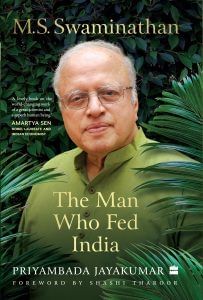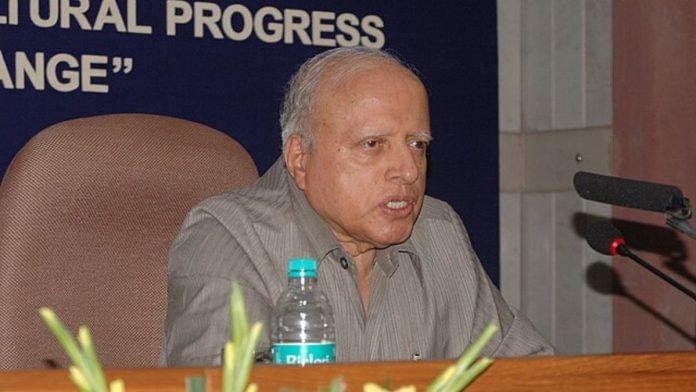On 27 May 1964, Jawaharlal Nehru, independent India’s first and longest-serving Prime Minister, died in his sleep. Lal Bahadur Shastri, a Congress leader of impeccable credentials who had a much firmer understanding and appreciation of India’s agrarian realities, took over as the new Prime Minister. The mild-mannered Shastri was a firm believer in research and development and deployment of technology in all sectors, especially the agricultural sector.
Newspaper headlines those days spoke about nothing else but the looming and gut-wrenching food shortages in India:
‘A farmer in Uttar Pradesh committed suicide because he could not stand watching his children starve.’
‘Hungry peasants in areas around Lucknow ate seed they had set aside for planting.’
‘A thousand people broke into two food shops in Agra and looted them of grain.’
Shastri and his cabinet had their work cut out. Shastri’s famous slogan ‘Jai Javan, Jai Kisan’ (Hail to the soldier, hail to the farmer), still evoked to this day, pointed to a very crucial policy departure from Nehruvian top-down heavy industrialisation to matters of agriculture and agrarian distress, defence and national security. It also acknowledged the dual role played by farmers in not just food security but also national security as most soldiers were drawn from farming backgrounds.
Help came unexpectedly for Swaminathan and his team from a crucial player in the Shastri Council of Ministers. C. Subramaniam or CS, as he was popularly referred to, was a Gandhian who took part in the Quit India movement and was even imprisoned for it. He was a member of the constituent assembly and participated in the drafting of the Constitution. He was a minister for education, law and finance in the C. Rajagopalachari and K. Kamaraj-led Cabinets in the erstwhile state of Madras. Subramaniam won a Lok Sabha seat in 1962 and was a Congress veteran from Tamil Nadu and a highly successful Minister of Steel, Mines and Heavy Engineering in Nehru’s cabinet.
On 9 June 1964, CS received a call at 10 p.m. from Lal Bahadur Shastri who had just taken over as Prime Minister. Shastri wanted Subramaniam to take over the decidedly less-glamorous Agriculture and Food ministries! This move clearly flummoxed Subramaniam because he considered himself a highly successful Steel Minister! Shastri had found absolutely no takers for the Ministries of Agriculture and Food and was heavily banking on the eminently qualified Subramaniam to bail him out of a tight corner. Neelam Sanjiva Reddy had almost accepted this ministry but changed his mind at the last minute.
Also read: Why Group Captain Nachiketa has ‘immense respect’ for a Pakistani Captain
Shastri’s faith in Subramaniam as Minister of Agriculture and Food was not misplaced as history would prove. Both Shastri and Subramaniam were firm believers in the Nehruvian tradition of the future belonging to science. Subramaniam especially was a very strong advocate for science being used in all areas not just agriculture, much like Shastri himself. Subramaniam crucially recruited B. Sivaraman, a brilliant civil servant who had vast field experience in agriculture and irrigation in Orissa, as his agriculture secretary in May 1965 (much against Biju Patnaik’s wishes who wasn’t willing to let him go!) after taking over as Minister for Agriculture and Food. C. Subramaniam lobbied politically for Swaminathan and his scientists in the Parliament while B. Sivaraman was the details man.
It was this trio of the Ss—M.S. Swaminathan the scientist; C. Subramaniam the politician and Minister of Agriculture; and B. Sivaraman the civil servant (incidentally all from Tamil Nadu) who put together a plan that would turn India’s fate from that of a begging bowl to a bread basket and from abject scarcity to one of absolute abundance.
The first thing Subramaniam did after he took over as the Minister of Agriculture and Food was to call about twenty agricultural scientists to Krishi Bhawan (offices of the Ministry of Agriculture) in New Delhi in August 1964 and ask them each how they proposed to solve the country’s food shortage. He wanted to take India’s most pressing problems to her scientists and get them to come up with solutions. He was the first minister to actively seek out the agricultural scientific community to provide him with answers.
When it was his turn, Swaminathan spoke powerfully about the new technology and hybrid seeds that they had at their disposal which Norman Borlaug had sent. He was convinced that based on their trials in IARI controlled plots, if these seeds could be sown in the fields of actual farmers, the yield stagnation in India could be overcome on a scale not witnessed before.
‘What is stopping you then, Swaminathan?’ Subramaniam looked intrigued.
‘Money, sir. We don’t have any!’ came the prompt reply.
‘I had submitted a proposal earlier which the Ministry refused to pass citing a lack of funds and more importantly, little belief in the new technology itself. The dwarf Mexican seeds provided by Dr Borlaug have proven they work but the Ministry had their doubts and that led to inaction on their part. Every year we are routinely humiliated by the import of PL 480 wheat from the United States. We need to break this debilitating cycle of our ship-to-mouth existence. Importing food is like importing unemployment. Seventy per cent of our people are employed in agriculture so when we import food, we are actually supporting farmers in other countries,’ Swaminathan responded passionately.
 This excerpt from ‘M.S. Swaminathan: The Man Who Fed India’ by Priyambada Jayakumar has been published with permission from HarperCollins Publishers India.
This excerpt from ‘M.S. Swaminathan: The Man Who Fed India’ by Priyambada Jayakumar has been published with permission from HarperCollins Publishers India.






